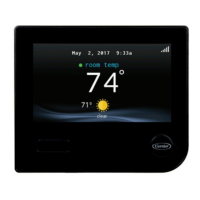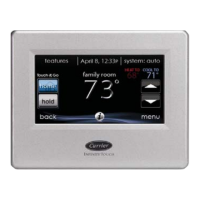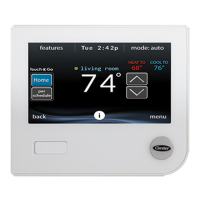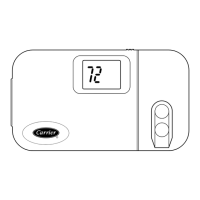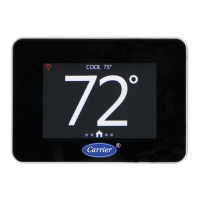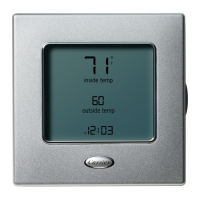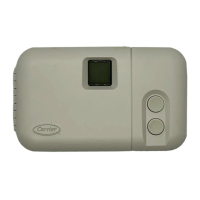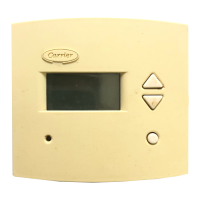36
minimum airflow during the dehumidify mode is increased to reduce
duct and register sweating. Also the airflow increases minimum airflow
during normal cooling operation to help reduce duct sweating.
After the selections are made, touch SAVE.
• Cooling Airflow: Quiet, Comfort, EFF325 (or EFF1), EFF350 (or
EFF2), or Max. Default = Comfort
• Heating Airflow: Comfort, EFF325 (or EFF1), EFF350 (or EFF2), or
Max. Default = Comfort
• Dehumidify Airflow: Normal or High. Default = Normal
6.3.2.2. Altitude
• Static Pressure selection: 0 to 10,000 ft. This is used to correct the
static pressure readings the system performs.
6.3.2.3. Dehumidification Options
The Dehum Drain Time (Smart Evap™ feature) option turns off the
continuous fan at the end of cooling for fifteen minutes in order to drain
the indoor coil of water. The fan will only be turned off if a dehumidify
demand existed at the start of or during the cooling cycle.
The Electric Reheat option (fan coils, only) enables the electric heat to be
used while cool-to-dehumidify is running. This will allow the
cool-to-dehumidify function to run longer, greatly improving humidity
control in cooling mode. Accumulated electrical energy used while
reheating (in kilowatt-hours) is shown on the Fan Coil Run Hours screen
and can be reset there. This option is only available with fan coil systems.
Self-identifying (staging) heaters provide the best performance for
re-heat dehumidification. For reheat applications, 9kW heaters provide
the best performance. The reheat algorithm functions along with the
overcool algorithm. If the room temperature is low enough that
overcooling is not allowed, reheat will not be allowed. Overcooling must
happen before the electric heaters are energized.
After the selections are made, touch SAVE.
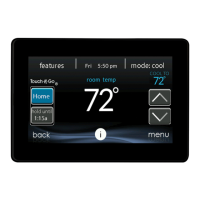
